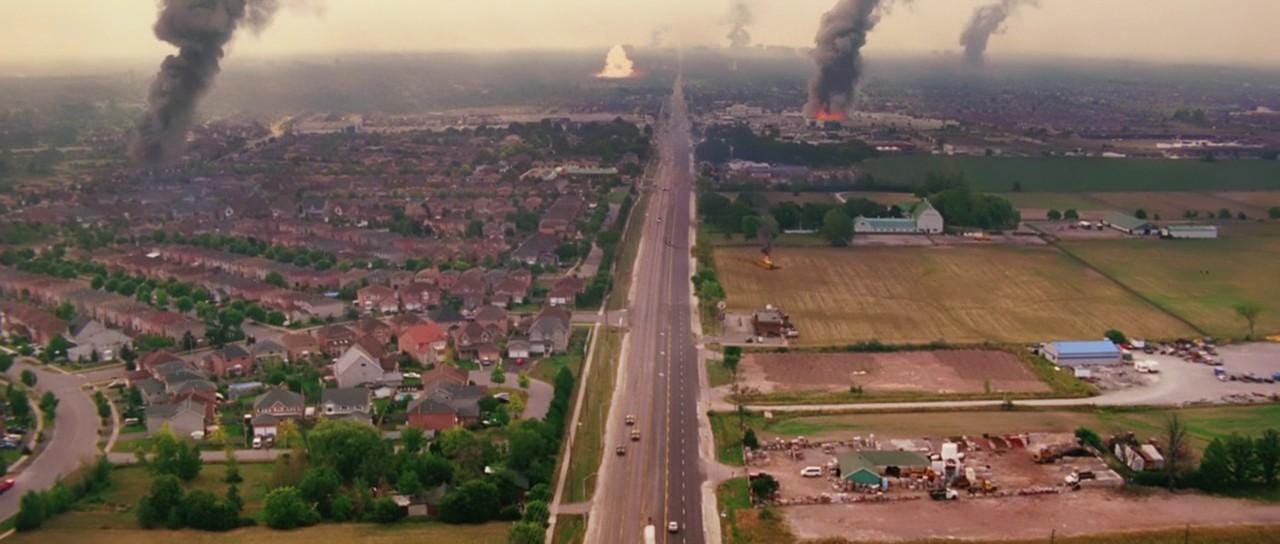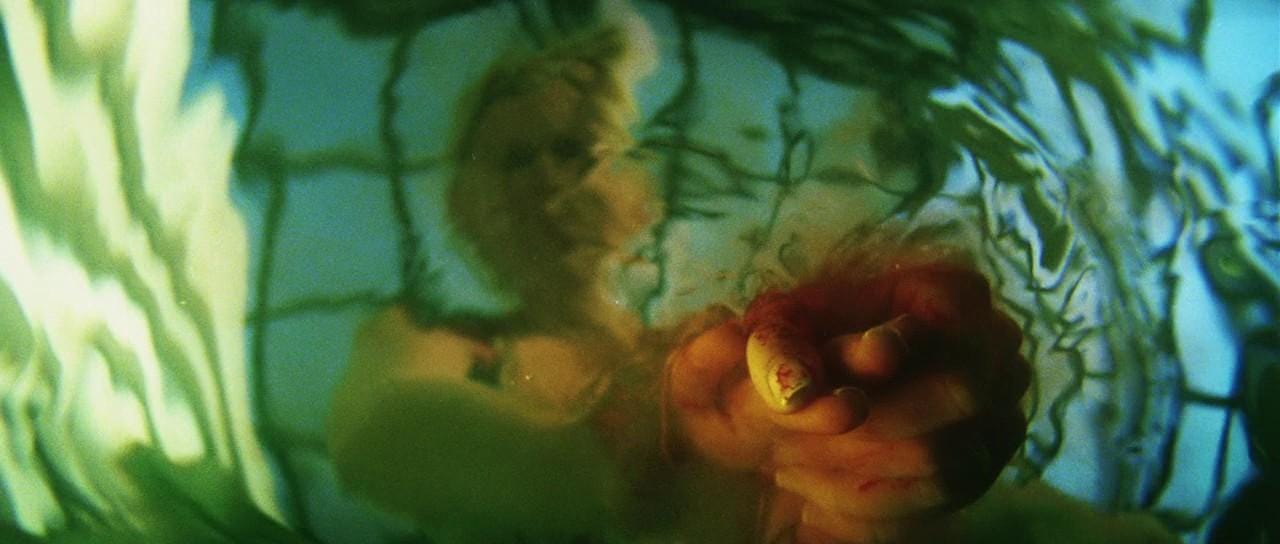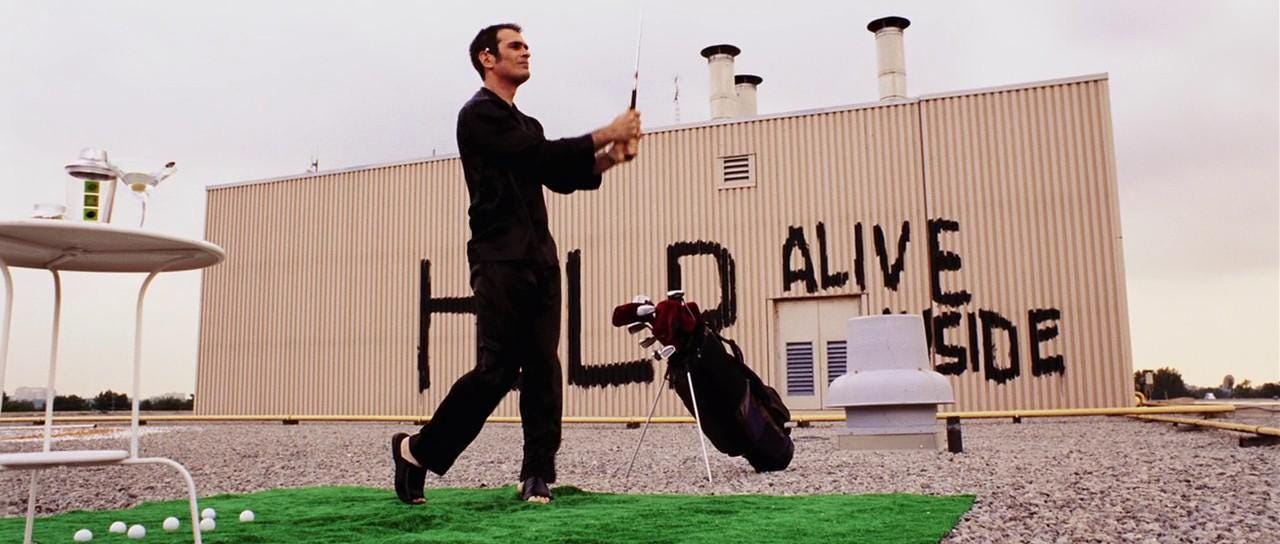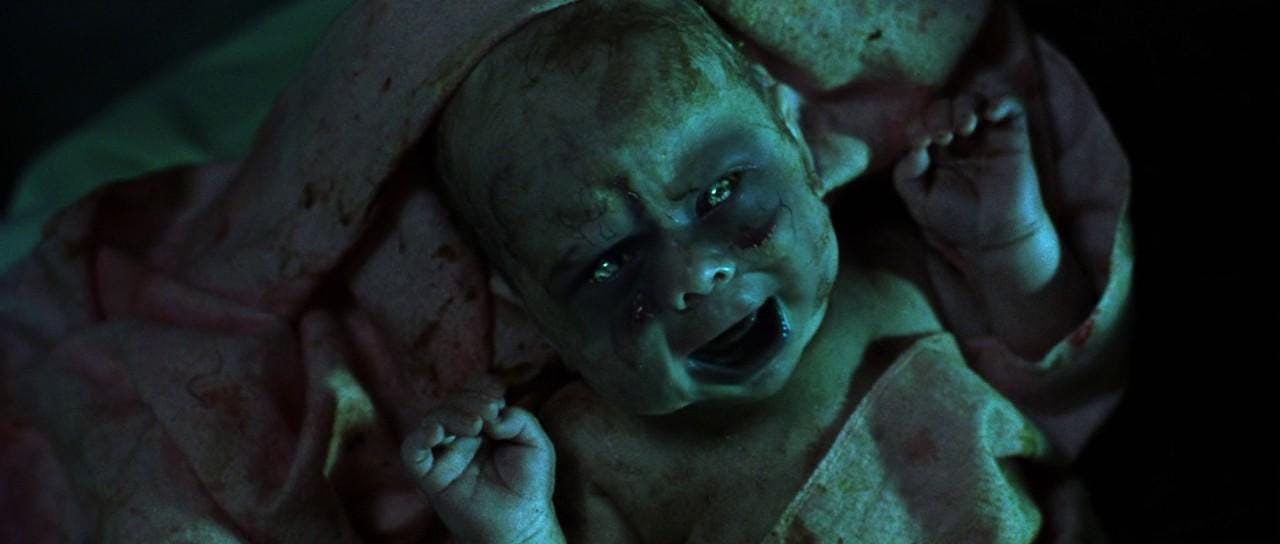Review: Zack Snyder's "Dawn of the Dead" holds up 20 years on
Movie of the Week #12 is a minor zombie classic
Welcome to Movie of the Week, a Wednesday column where we take a look back at a classic, obscure, or otherwise interesting movie each and every week for paid subscribers. Follow this link for more details on everything you get subscribing to Fade to Lack!
The biggest problem with Zack Snyder’s 2004 film Dawn of the Dead is that it bears the unfortunate burden of sharing its title with a masterpiece. George A. Romero’s 1978 original is an unmitigated triumph, a film that feels as fresh, arresting, and surprising today as it probably did 45 years ago, despite the incalculable influence it has had on those many years of pop culture. That first Dawn of the Dead is both deeply scary and profoundly funny, a biting work of smart, playful social satire that is also laced throughout with edge-of-your-seat tension, seamlessly shifting between divergent tones in a way very few films have ever managed to master. None of that is true of Snyder’s Dawn of the Dead, a film with no ambitions of satire or social critique, and which is concerned more with action than with tension (as evidenced by its 28 Days Later-inspired use of faster, more powerful zombies than the slow, lumbering creatures of Romero’s films). That isn’t a critique, mind you: Snyder’s Dawn of the Dead knows it wants to be an intense, bombastic, character-driven popcorn zombie flick for the 21st century, and it executes on its ambitions quite well. Its only problem is that title: Unnecessary in the first place (the film is a remake in name only, borrowing the mall setting and little else from Romero’s work), and inviting comparisons to a film it could never match under any circumstance. It would be like making a fun little flick about a man starting a newspaper and calling it Citizen Kane; whatever you come up with, that title can only ever be an anchor.
But then, this Dawn of the Dead landed right in a middle of a period where studios were really only investing in two kinds of horror movies: Remakes of genre pillars – Halloween, Friday the 13th, A Nightmare on Elm Street, The Texas Chain Saw Massacre, etc. – and Saw-inspired ‘torture porn’ flicks. In the midst of the horror renaissance we’re living through these days, that era feels especially distant, and most of what it produced has failed to stand the test of time. Yet twenty years on from its release, love for Snyder’s Dawn of the Dead has endured, and mostly managed to overcome the barrier of its title. It’s enjoyed multiple lovingly-produced home video releases from Shout! Factory (the most recent 4K set is a stunner), and even a brief theatrical re-release earlier this year to celebrate its 20th anniversary (which is how I saw it for the first time). Certainly, part of what’s kept the film alive and in the conversation is the names of the people who made it: Not just Zack Snyder, who made his feature directorial debut here, but also screenwriter James Gunn (the person who, coincidentally, later succeeded Snyder as the DC film universe’s creative mastermind) and star Sarah Polley, in one of her highest-profile leading roles before she left acting behind to direct some of the best films of the 21st century (if you haven’t seen Stories We Tell or Women Talking, please feel free to step away from this review and do so now). It’s an assemblage of talent that practically begs a critical reassessment.
Doing so is absolutely worthwhile, since even if Snyder’s Dawn of the Dead falls far short of the greatness of its namesake, it is very comfortably ‘good,’ and almost certainly the best of the dump truck’s worth of horror remakes from the early 2000s (with the possible exception of Rob Zombie’s Halloween, a more uneven but also more ambitious movie than Dawn of the Dead, which led to a real masterpiece of a sequel in Zombie’s Halloween II). Zombie media became overwhelmingly ubiquitous in the years since this film’s release, between video games like Left 4 Dead and The Last of Us and TV shows like The Walking Dead and, well, The Last of Us, and it says a lot about what Gunn and Snyder pulled off here that their Dawn of the Dead still feels worth a look at all. It isn’t high art, and it isn’t genre defining, but it’s fun, and sometimes just a bit more than that, enough that it’s earned its position as a minor horror classic in its own right.
The brunt of interest in this film today seems to stem from pop culture’s never-ending fascinating with Zack Snyder, and if his filmography interests you at all, you won’t be disappointed. While I’m not part of the growing chorus insisting this first at-bat remains Snyder’s best movie – I really do believe his Justice League is a minor miracle – it’s absolutely true that Dawn of the Dead showcases many of his strengths while minimizing what would become his greatest weaknesses. The film is tight, focused, and efficient in a way none of his later films are, but it isn’t lacking for cinematic ambition. The pre-credits scene following Polley at the outset of the zombie crisis is a real knockout, employing a series of long, fluid takes capturing an elaborate three-ring circus of chaos stretching across the widescreen canvas. As well-known as he is for slow-motion action, these kinds of shots are also Snyder signatures, as is this film’s extremely high-contrast photography, or the steady rhythm of very sensory images depicting moments of violence and its aftermath (an early shot of Polley plunging her hands into a fountain to let the blood wash off is one of my favorites). There is some slow-motion here, mainly to showcase guns firing and offer a brief reprieve in the midst of otherwise very intense action sequences, but no single technique becomes indulgent. This is just smart, stylish, and confident horror/action filmmaking, perhaps a bit less singularly ‘Snyder-esque’ than his biggest fans would prefer, but also straightforward enough for his detractors to get on board with.
Snyder is also known for his needle drops, of course, for better and for worse, and Dawn of the Dead has the best one he’s ever used by a very wide margin: A montage of the survivors settling into daily life at the abandoned mall scored to comedian Richard Cheese’s upbeat swing cover of Disturbed’s infamous heavy metal track “Down with the Sickness.” I’ve actually always been a bit endeared to Snyder’s alternatively offbeat and too-on-the-nose needle drops; even when they don’t work, you can tell he’s always extremely earnest in his choice of songs, and because he’s very uninhibited about which favorites he picks for big moments, you sometimes get big, surprising swings, with this version of “Down with the Sickness” remaining the biggest and best swing he’s ever taken. It’s such a unique, inspired way to express what is going on in the movie: this laid-back lounge performance of an infamously intense heavy metal song mirroring the way all these people are simultaneously besieged by the apocalypse and living a life of utter mundanity. It is the perfect song for that extraordinary image of Ving Rhames walking to the edge of the roof to see the absolute ocean of zombies assembled around the mall; these people are surrounded on all sides by encroaching doom, but they don’t have a whole lot to do other than play chess and explore the detritus of 21st-century capitalism. What better way to make us in the audience feel that uncanny sensation than to play an extremely recognizable song in its most bizarre, unrecognizable form? Snyder apparently had to fight with the studio to let him use the Richard Cheese track, and it’s anecdotes like that which endear him to me, no matter how badly he misunderstood Watchmen or how insufferable his fans can be; the dude’s a real one.
That said, as clear as Snyder’s fingerprints are here, I actually think Dawn of the Dead is even more interesting to consider as an early work from James Gunn. His voice is really strong throughout the screenplay, and one can definitely see the seeds of Guardians of the Galaxy, The Suicide Squad, and Peacemaker at work. There’s some genuine, wonderfully tasteless shlock here, of course, like the entire subplot with Mekhi Phifer and his zombie family (zombie baby!) – Gunn didn’t study under Troma’s Lloyd Kaufman for nothing – but also a real sweetness and sincerity in the character relationships and the community they build together while trapped in this mall. If anything distinguishes Dawn of the Dead from other horror films of the aughts, it’s the very strong, vivid group of characters at its core, people the movie has a lot of affection for despite – and in some cases because of – their myriad flaws. Michael Kelly’s C.J. is introduced as the most awful, abrasive character imaginable – a low-rent security guard who revels in his chance to be an authoritarian bully – and his gradual evolution into someone who, while never necessarily ‘noble,’ is at least a team player with a real sense of investment in the survival of the group, is definitely a James Gunn touch. There’s no one moment or obvious beat where this guy changes, but by the time he’s proactively risking his life to save Rhames’ character, or staying behind to sacrifice himself on the docks, we believe the transformation.
The relationship between Rhames’ Kenneth and Bruce Bohne’s Andy, a gun shop owner stranded on his roof on the other side of the parking lot, is the best idea in the film, and also feels like a real Gunn signature. This is a character we only ever see from the perspective of Kenneth and the others in the mall, our only good look at him coming through binoculars, who communicates with the survivors by writing messages in big letters on whiteboards. And yet, the relationship that’s forged feels real, to the extent that Kenneth is adamant Andy is a member of the group when it makes time to hatch an escape plan. I love that, and I love how, when things inevitably go south at Andy’s place, Snyder uses that as an opportunity to stage a whole zombie action sequence remotely, with the survivors and the audience only hearing what’s going on over a walkie talkie. Apart from a few cameos (Ken Foree’s, as a bigoted televangelist gleefully blaming the apocalypse on homosexuality, is particularly striking), the mall setting is really the only thing this Dawn of the Dead borrows from the original Dawn of the Dead (even the zombies themselves are so different as to feel like a fairly different concept); but the film never repeats any of Romero’s ideas in how it employs that setting, or how it portrays the relationships amongst the survivors therein. Viewed today, the film feels less like a Romero riff than it does a distinctly James Gunn spin on a well-worn genre. (It’s unclear, from Snyder’s statements, whether he or Gunn picked The Jim Carroll Band’s “People Who Died” for the end credits, cheekily undercutting the heightened emotions of the final scene, but Gunn would use it again seventeen years later, in even more ridiculous fashion, in the opening credits to The Suicide Squad, which tells you how much of his DNA is in Dawn of the Dead, or vice versa).
Snyder’s real superpower as a director has always been his eye for casting and his work with actors, and that’s just as true here as in any of his later films. Polley is an inspired choice as the film’s lead; Gunn’s script is probably at its weakest characterizing her and the other female characters, but Polley brings such a grounded, soulful presence that those gaps don’t really register, and alongside the always-great Ving Rhames and Jake Weber as Michael, the ensemble has a really solid core of empathetic humanity. Ty Burrell is another name showing up here several years before he’d become famous, and given how endearingly affable he proved to be as Phil on Modern Family, it’s amusing to see just how effectively he plays the heel here, the character the movie wants us to feverishly anticipate taking a bullet to the head (Snyder holds a beat longer than he has to on Polley relishing that moment when it comes, probably because he knew there would be applause at even moderately attended screenings).
As with most of Snyder’s films, Dawn of the Dead has a longer, unrated Director’s Cut, and while the differences are much more modest than what we’ve come to expect from his elaborate three-to-four hour revised versions, I will note that the unrated version is a notable improvement on two dimensions. First, there are some moments in the R-rated theatrical cut where the filmmaking suddenly gets a bit dicey, with handheld camerawork and fast editing combining to undermine a scene’s geography, and that’s definitely ameliorated in the Director’s Cut; I imagine the cuts made to secure an R rating were a bit haphazard, and moments I found editorially awkward in that version play just fine in the unrated cut. The gore effects – a cornerstone of any zombie film worth its salt – are also quite a bit better in the longer edit; they’re still a far cry from Tom Savini’s legendary work in the original, or the work Savini’s apprentice Greg Nicotero would later do on Romero’s Land of the Dead or AMC’s The Walking Dead, but the most creative moments got left on the cutting room floor for theaters, and I was pleasantly surprised to see the unrated cut pack a bit more of a punch. The ‘zombie baby’ scene gets a fuller expression without having to consider the MPAA, though I will admit the horror freak inside of me still wishes that scene went a bit further. You had me at ‘zombie baby;’ let the baby at least tear someone’s throat out.
It is definitely amusing to consider the fact that both modern eras of DC superhero films can trace their creative leadership back to this little-horror-remake-that-could from 2004. Watching it now emphasizes for me how innately good Snyder and Gunn are at horror, even as they’re now most associated with comic books. Snyder eventually got back to his zombie roots with Army of the Dead for Netflix, while Gunn hasn’t really returned to the genre since Slither in 2006. I’d like to see both of them do more movies like this; I’m very much looking forward to Gunn’s take on Superman, but I wonder if Swamp Thing will really be his time to shine. In any case, Dawn of the Dead is a treat. Not a revelatory or particularly substantive one, and certainly not a film that stands up to the comparison invited by its title, but after twenty subsequent years of zombie media becoming increasingly rote, there is something genuinely refreshing at work here. It puts a big smile on my face, particularly by the time the batshit crazy end credits sequence comes to a close, and in lieu of real scares or provocations, I’ll take that. If it doesn’t earn a place on the shelf next to Romero, it’s more than worthy of a spot in one’s October horror marathon.
NEXT WEEK: We look at Ridley Scott’s 2001 film HANNIBAL, and compare it to the absolutely bonkers 1999 Thomas Harris novel it’s based on.
Read the book 200 Reviews by Jonathan R. Lack in Paperback or on Kindle
Like anime? Listen to the podcast I host with Sean Chapman, JAPANIMATION STATION, where we review all sorts of anime every week. Watch on YouTube or Subscribe wherever you get your podcasts.







